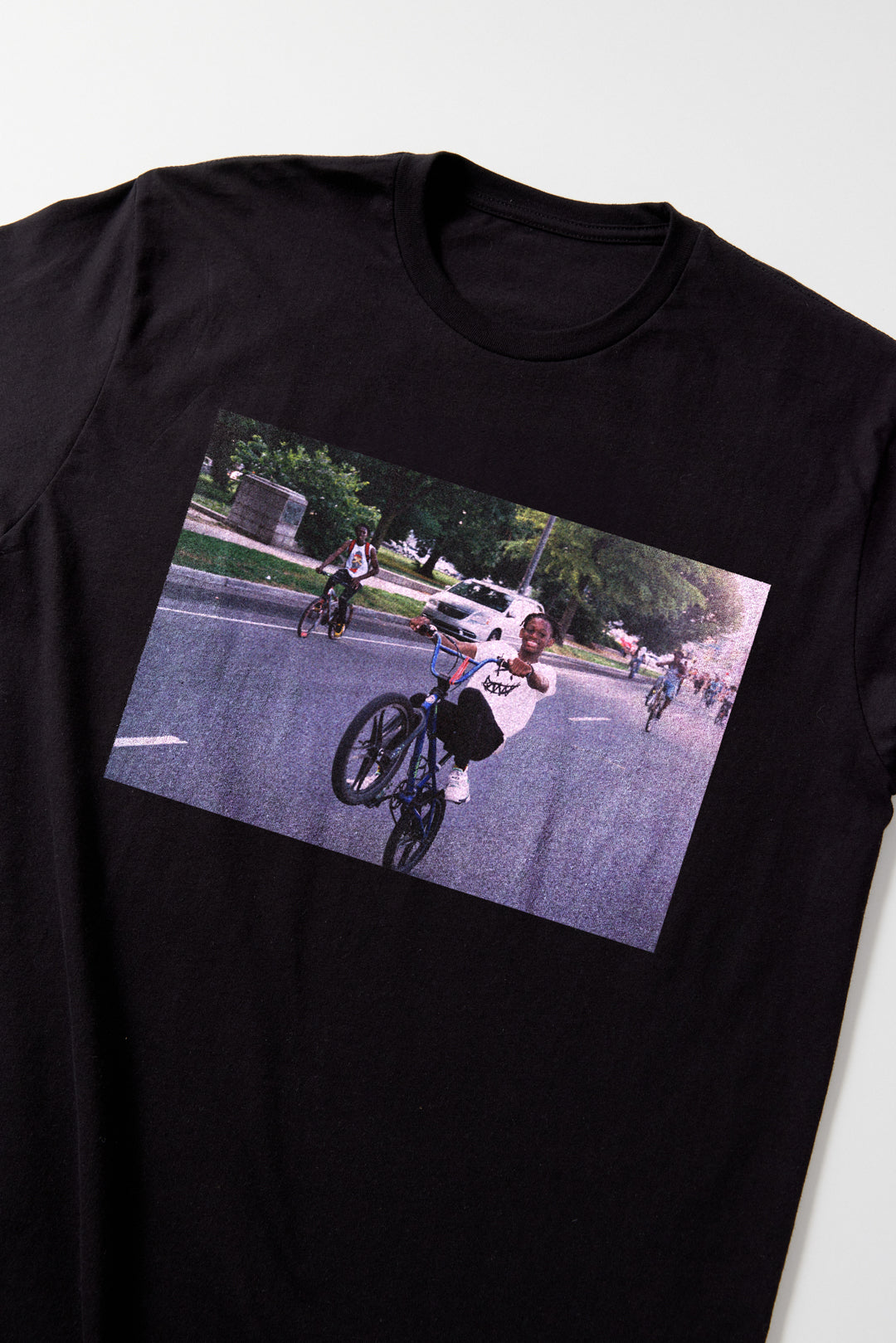White Women, Mind Your Business
WORDS: MYLES E. JOHNSON | ART: FAYE ORLOVE
The best thing my mother did for me was to keep me away from white people and white culture for as long as possible. This was not an act of prejudice, but an act of preservation of her young black child.
She wanted to ensure my imagination was fully formed before encountering the daily delusion that is whiteness; that I would, of course, have to eventually interact with as a black person in America. I was born into a moment, for my mother, where she knew I could be a happy person but it would take strong discipline on her part to ensure her black child wouldn’t be broken beyond repair by systems designed to mold the natural wild black imagination into one of the complicit negro. I imagine if my mother was Margaret Garner, she’d snatch me out of the world as fast as she gave birth to me too. 1991 didn’t call for such an extreme decision, but she did snatch me out of the routine assimilation that a lot of black children are thrown into without warning and with many critiques from family and peers. It is because of this that I often feel like I am in the twilight zone when interacting with both black and white people. Delusions are entertained for longer than I think are appropriate and conversations are often these cyclical, purposeless debates about facts that were discovered decades ago.There has been a continuous conversation that has been happening around white womanhood and their complicity in white supremacist domination.Still, the most jarring invention that white supremacy has produced is the white woman. As dangerous as she is ridiculous, I am often astonished by the white woman who sees herself as a delicate flower as she smashes spaces and bodies like Godzilla. There has been a continuous conversation that has been happening around white womanhood and their complicity in white supremacist domination. White women are horrifying. Anyone who has seen Get Out or Django Unchained is at least mildly aware of the anxiety around the white woman who decides to weaponize the frail and vulnerable space she takes up in the white supremacist patriarchal imagination in order to annihilate the spaces and bodies of others. Again, the white woman is horrifying. It goes without saying that I keep my interactions with white people, including white women, limited. Not to be prejudiced, but to preserve my imagination and labor. I mean to live and serve myself first and foremost, not to be used by other people’s guilt or desires. This is why this week’s interactions with white women were special to me because they’d rarely happen in my little, black queer world.
 Lily Allen’s white supremacy has been engaged with before. However, I was shocked to observe the reach of her arrogance when she pushed Drake on not having women featured on his album. Of course, I love a critical moment, but I was astonished by who was delivering it. Whiteness has no role policing black art production because whiteness’ own musical productions wouldn’t be possible without blackness. Policing black artists is like making up the rules for a game you had no hand in creating. The very politic that Lily Allen was trying to weaponize is the one she ignores when producing her own music. In a decade-long career, she has worked with less than 5 black people, man or woman. Her use of black women as simply bodies to position herself as a meta-satirical artist or ‘cool’ makes her comments laughable. Her use of 50 Cent lyrics and melody to create one of her largest songs, “Nan, You’re a Window Shopper”, makes one wonder about the extent of arrogance she must have to exploit blackness for profit, and then police it when it doesn’t match her ideals.
Lily Allen’s white supremacy has been engaged with before. However, I was shocked to observe the reach of her arrogance when she pushed Drake on not having women featured on his album. Of course, I love a critical moment, but I was astonished by who was delivering it. Whiteness has no role policing black art production because whiteness’ own musical productions wouldn’t be possible without blackness. Policing black artists is like making up the rules for a game you had no hand in creating. The very politic that Lily Allen was trying to weaponize is the one she ignores when producing her own music. In a decade-long career, she has worked with less than 5 black people, man or woman. Her use of black women as simply bodies to position herself as a meta-satirical artist or ‘cool’ makes her comments laughable. Her use of 50 Cent lyrics and melody to create one of her largest songs, “Nan, You’re a Window Shopper”, makes one wonder about the extent of arrogance she must have to exploit blackness for profit, and then police it when it doesn’t match her ideals.
 After this observation, I was reminded of the other white woman celebrity, Ariane Bellamar, who referred to Van Jones as a ‘house nigger’. She used her consumption of black culture and her proximity to black people as an excuse to use language that does not belong to her unless she wishes to exist as a violent white supremacist. Her response reminded us that whiteness is fueled by greed and power, even in language. White people’s desire to use ‘nigger’ is rooted in the desire of whiteness to remind black people that there is nowhere it can not arrive. And whiteness will routinely remind you that what belongs to blackness isn’t decided by black people, but whiteness having no interest. This shows up whether whiteness identifies with a red or blue state, whether it is cis or trans, man or woman, rich or poor, queer or straight, business-driven or bohemian; the greed of whiteness transcends everything in the imperialist white supremacist capitalist patriarchy.
After this observation, I was reminded of the other white woman celebrity, Ariane Bellamar, who referred to Van Jones as a ‘house nigger’. She used her consumption of black culture and her proximity to black people as an excuse to use language that does not belong to her unless she wishes to exist as a violent white supremacist. Her response reminded us that whiteness is fueled by greed and power, even in language. White people’s desire to use ‘nigger’ is rooted in the desire of whiteness to remind black people that there is nowhere it can not arrive. And whiteness will routinely remind you that what belongs to blackness isn’t decided by black people, but whiteness having no interest. This shows up whether whiteness identifies with a red or blue state, whether it is cis or trans, man or woman, rich or poor, queer or straight, business-driven or bohemian; the greed of whiteness transcends everything in the imperialist white supremacist capitalist patriarchy.
I am reminded of Dana Schutz’s recent portrait of a dead Emmett Till and reminded that even white women with the desire to be radical still find themselves being incredibly violent.Grappling with these two atrocious moments of white womanhood that happened in the culture within 7 days of each other reminded me that the real radical job of people socialized into seeing themselves as white women is to un-detonate themselves. I am reminded of Dana Schutz’s recent portrait of a dead Emmett Till and reminded that even white women with the desire to be radical still find themselves being incredibly violent. They use their guilt as not only a way to re-traumatize black people, but also to profit which only perpetuates white supremacist capitalism, all under the guise of curiosity and expression. The real job of people socialized to identify themselves as white women is to know that every black space, every black conversation, every black body, and every black production they find themselves interacting with is a potential terrorist attack if not practicing self-awareness. To prevent this violence, there are two options: to carry a radical critical awareness in everywhere you find (and don’t find) yourself or mind your business.

